コウホネの花は上を向いて咲き、外側に大きく厚い萼片が5枚、内側に小さく目立たない花弁が15枚。雄しべと雌しべの形が噴水のようです。
Spatterdock’s flower blooms upwards. The flower has 5 large, thick sepals on the outside and 15 small, inconspicuous petals on the inside. The stamens and pistils are shaped like a fountain.
【仮名】コウホネ
【和名】河骨
【英名】Spatterdock, Yellow Pond Lily
【学名】Nuphar japonicum
【誕生】07/ 05, 07/ 10, 08/ 06, 08/ 08
【開花】05, 06, 07, 08, 09月
【花色】Yellow
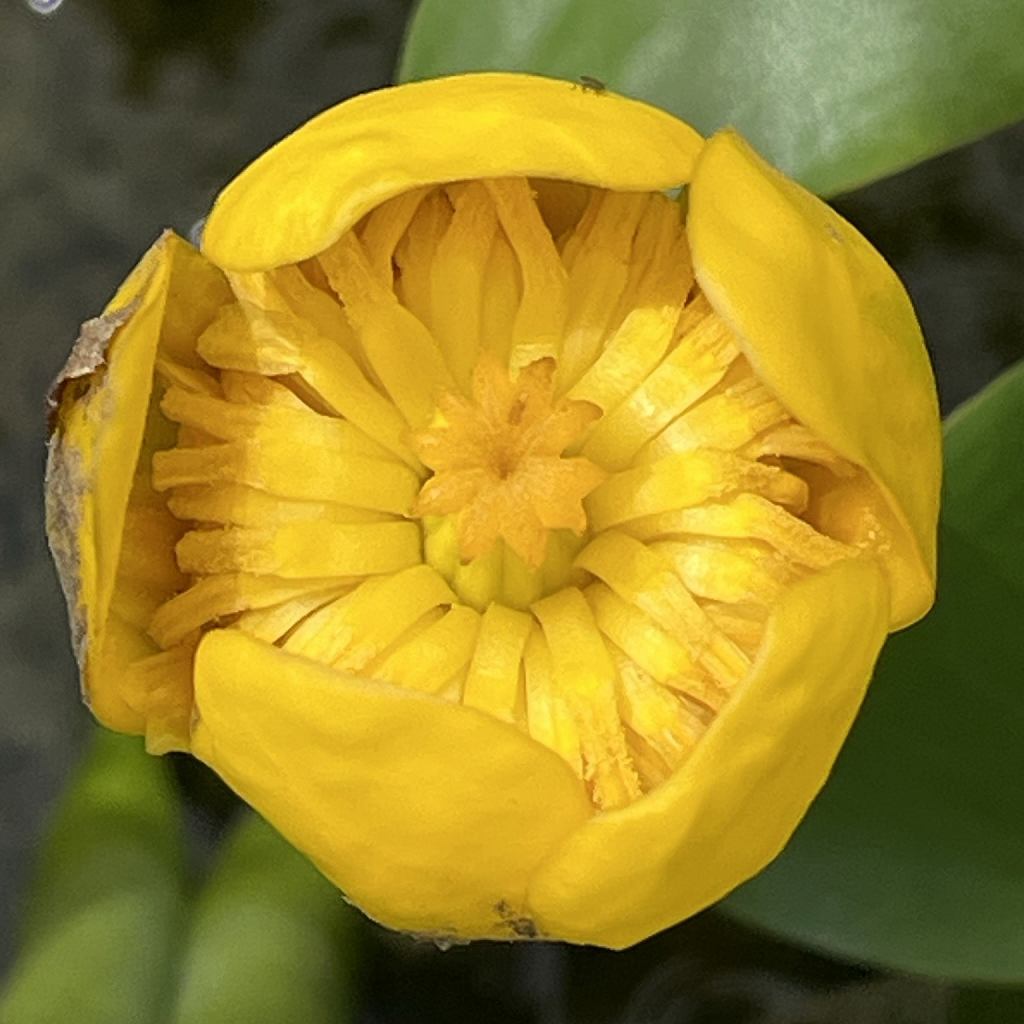
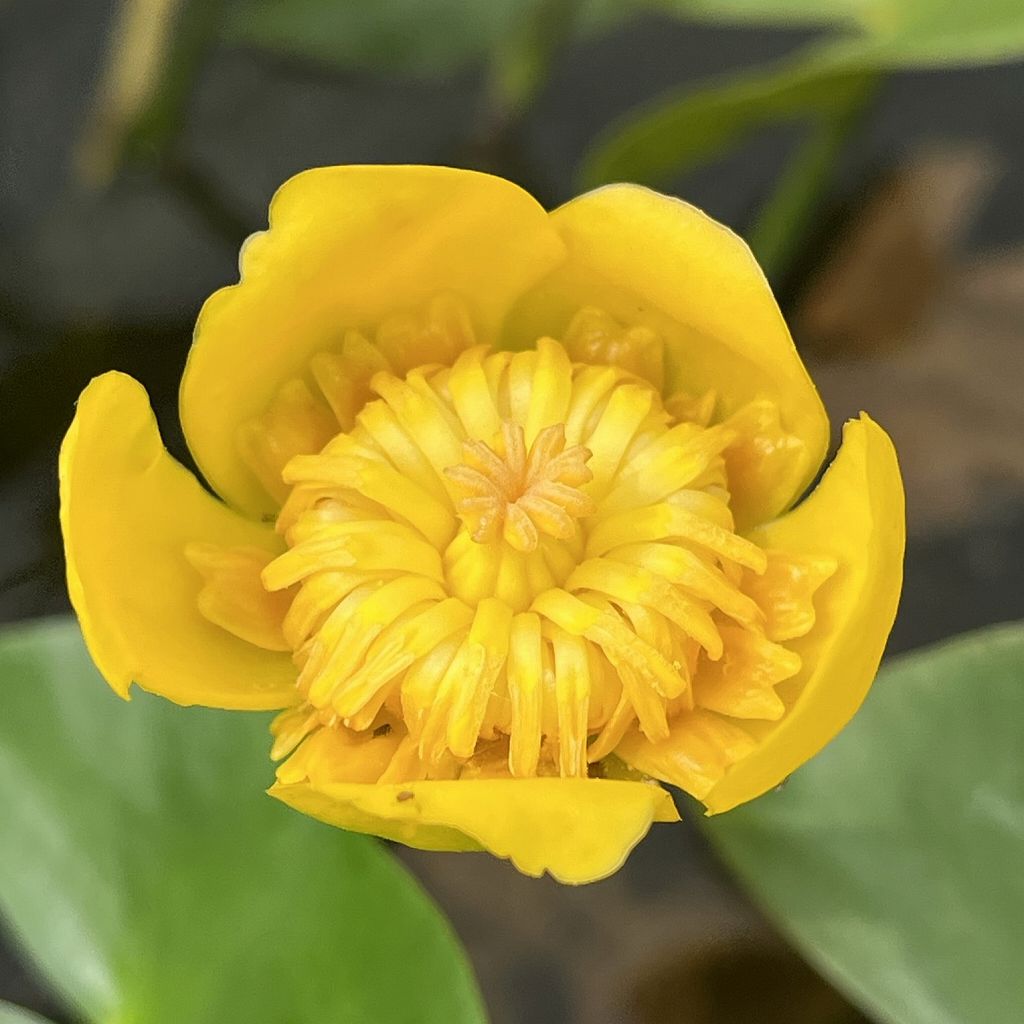
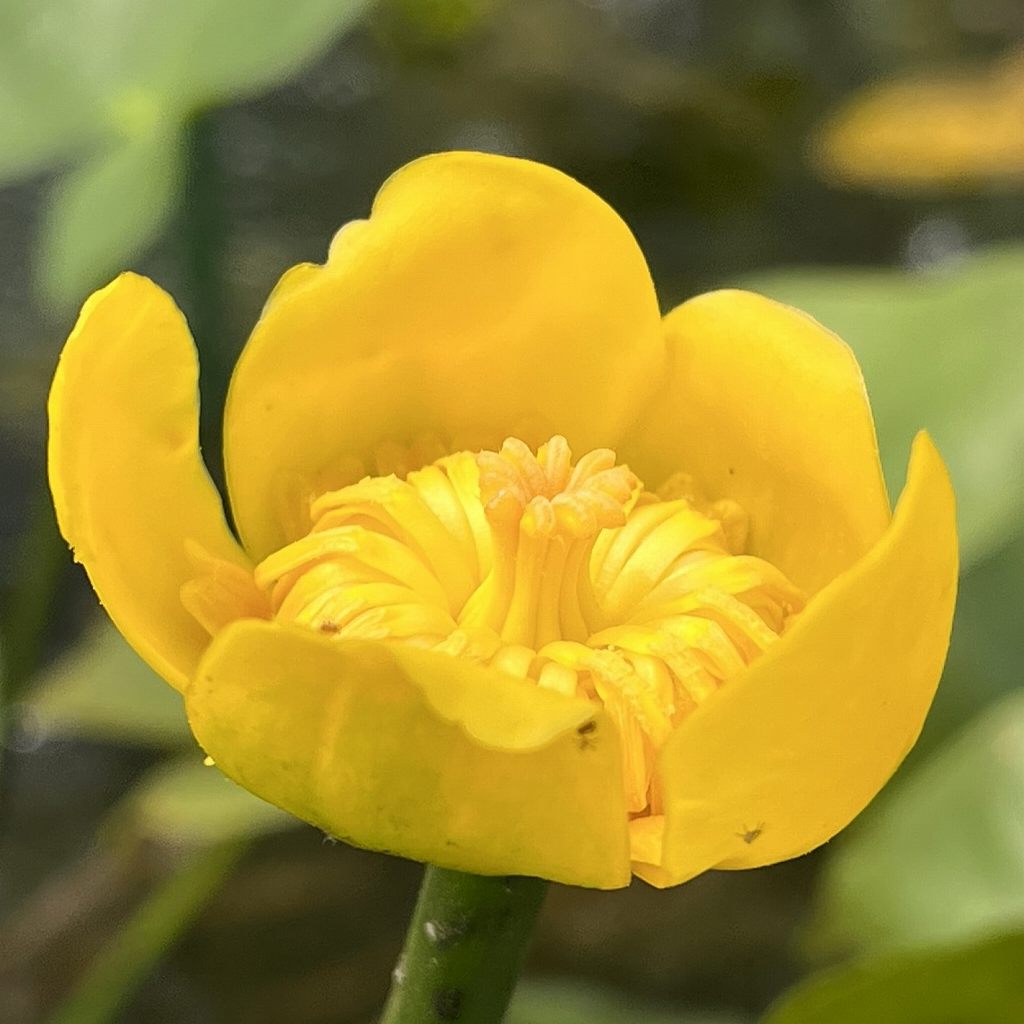
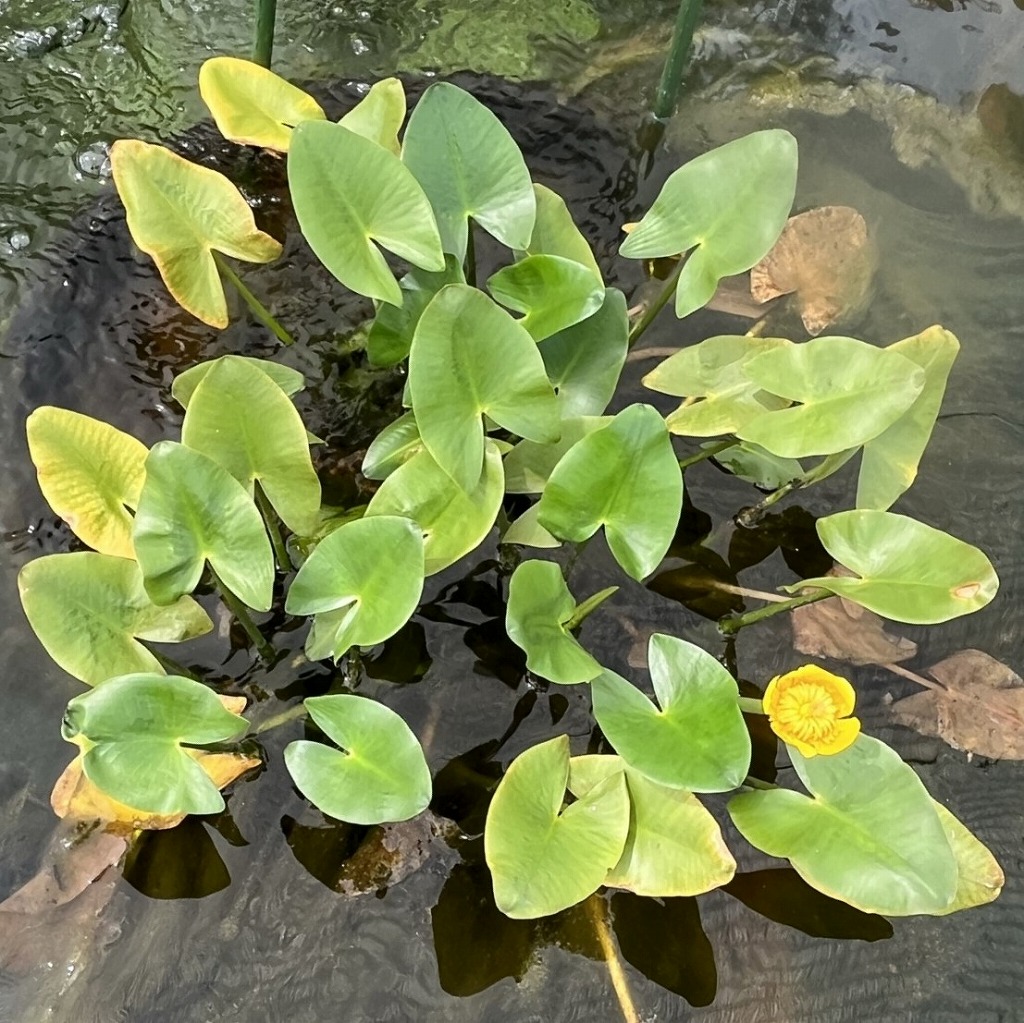
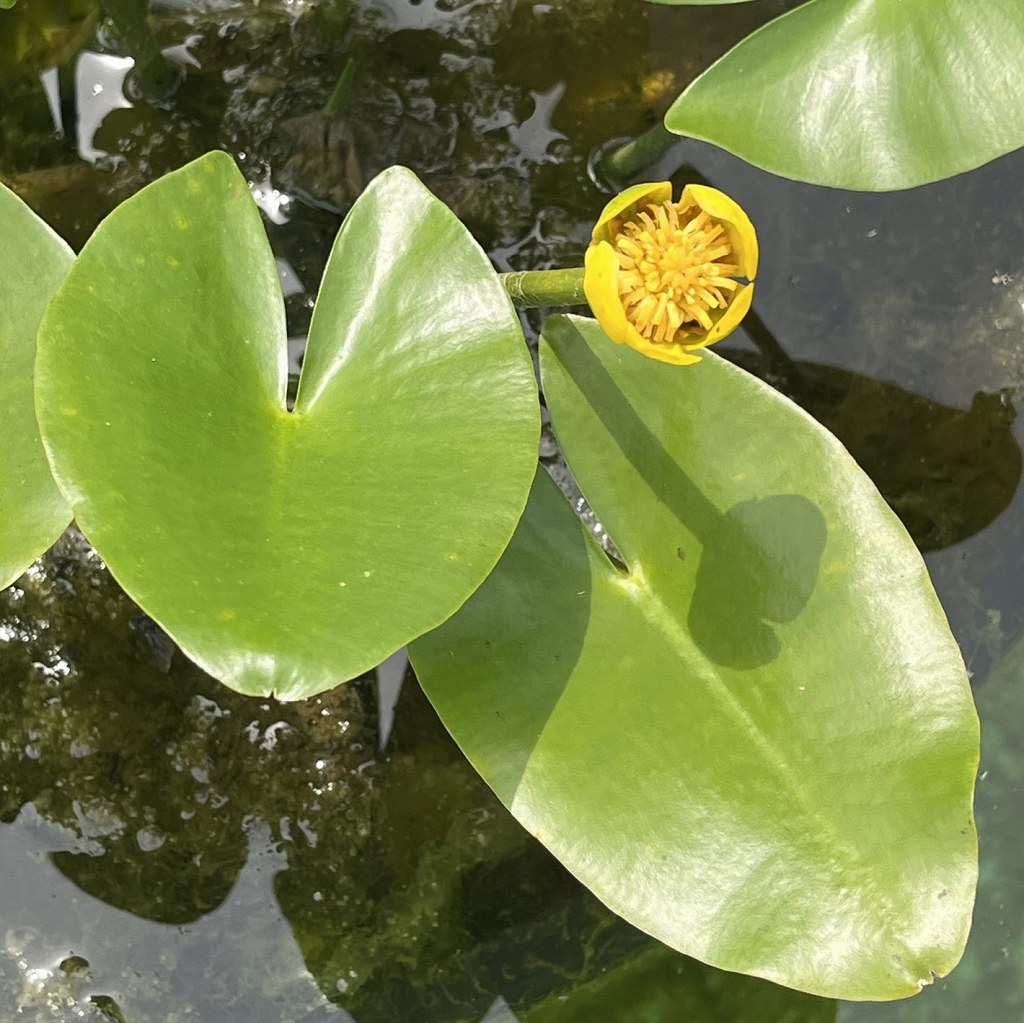
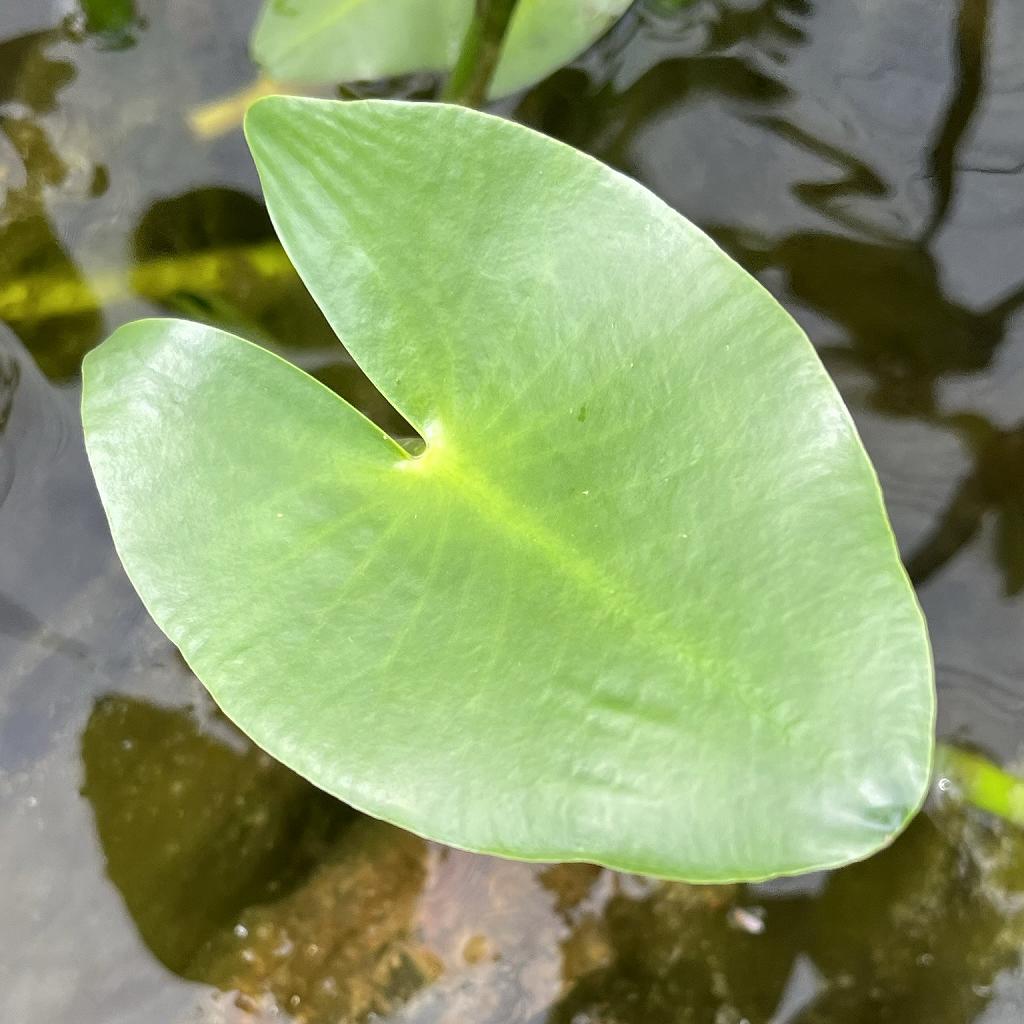
コウホネ
コウホネの概要
コウホネはスイレン科の多年草。北海道南西部から本州、四国、九州まで分布し、池沼、河川、水路で自生しています。根茎は海綿質で底泥中を這い伸び、葉は水中に沈水葉、水面に挺水葉、水上に抽水葉。花は細長い柄の先で上を向いて咲きます。花言葉は「秘められた愛情」など。
コウホネの名前
コウホネの名前の由来は「河骨」「川骨」の転訛。川辺に生え、川底を這う白色の太い根茎が、川底に横たわる動物の骨のように見えるからです。葉の形状から「川蓮」という別名も。ラテン語の属名ヌファーはアラビア語で「睡蓮」、種小名ジャポニカムは「日本」という意味です。
コウホネの姿形
コウホネは根茎が盛んに分枝し、葉が束生。沈水葉は細長く波打ち、挺水葉は丸く光沢があり、抽水葉は先が尖って肉厚です。花は外側に大きく厚い萼片が5枚、内側に小さく目立たない花弁が15枚、雄しべと雌しべの形が噴水のよう。花後の液果は熟すと水没して種子を散らします。
コウホネの近縁
コウホネの近縁種「西国姫河骨」は西日本に分布し、姿形が似ているものの、花が小さく、水面の挺水葉が目立ちます。そのほか、「姫河骨」は東海地方に、「根室河骨」は北海道~東北地方に、「尾瀬河骨」は尾瀬や月山などに分布。「紅河骨」は咲き終わりに花が赤色を帯びます。
コウホネの利用
コウホネは根茎にアルカロイドのヌハリジンなどが含まれ、掘り上げて乾燥したものが生薬「川骨」になります。煎じて鎮咳、去痰、利尿、消炎、浄血、止血、強壮、解熱などに。北海道のアイヌの人々は昔、根茎をアク抜きして干しておき、水で戻して汁の具などにして食べました。
Spatterdock
Overview of Spatterdock
Spatterdock is a perennial plant of the Nymphaeaceae family. It is distributed from southwestern Hokkaido to Honshu, Shikoku, and Kyushu, and grows naturally in ponds, rivers, and waterways. The rhizome is spongy and extends through the bottom mud, and the leaves grow underwater, on the water surface, and above the water. The flower blooms upwards at the tip of long slender stalk. The language of flower is “hidden love”.
Name of Spatterdock
The Japanese name of Spatterdock means “river bone”. This is because the thick white rhizomes that crawl along the riverbed look like animal bones lying on the riverbed. It is also called “river lotus” because of the shape of its leaves. The Latin genus name Nuphar means “water lily” in Arabic, and the species name Japonicum means “Japan”.
Appearance of Spatterdock
Spatterdock has heavily branched rhizomes and leaves in bunches. The underwater leaves are long and slender and wavy, the leaves on the water surface are round and shiny, and the above-water leaves are pointed and fleshy. The flower has 5 large, thick sepals on the outside and 15 small, inconspicuous petals on the inside, and the stamens and pistils are shaped like a fountain. When the berries ripen after flowering, they submerge in water and scatter seeds.
Relatives of Spatterdock
A related species of Spatterdock, “Saikokuensis” is distributed in western Japan and has a similar shape, but its flowers are smaller and its leaves on the water surface stand out. In addition, “Subintegerrimum” is distributed in the Tokai region, “Pumila” is distributed in Hokkaido to Tohoku region, and “Ozeense” is distributed in Oze and Gassan. “Rubrotinctum” flowers turn red at the end of blooming.
Use of Spatterdock
Spatterdock’s rhizomes contain the alkaloid nuharidine, and when dug up and dried, it can be used as a herbal medicine. It is boiled and used for antitussive, expectorant, diuretic, anti-inflammatory, purifying, hemostatic, tonic, and antipyretic purposes. The Ainu people of Hokkaido used to remove the scum from the rhizomes, dry them, rehydrate them, and eat them as ingredients for soups.


